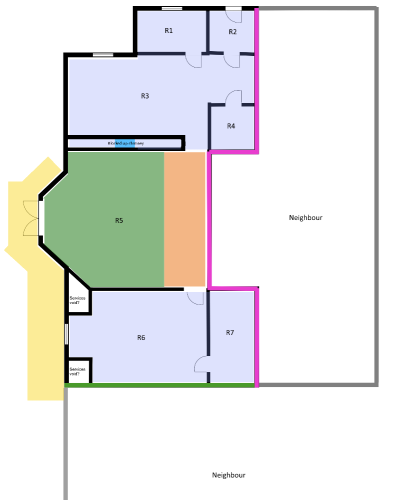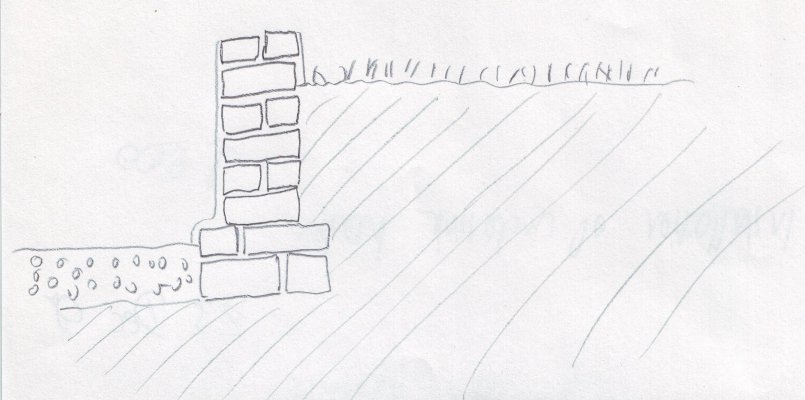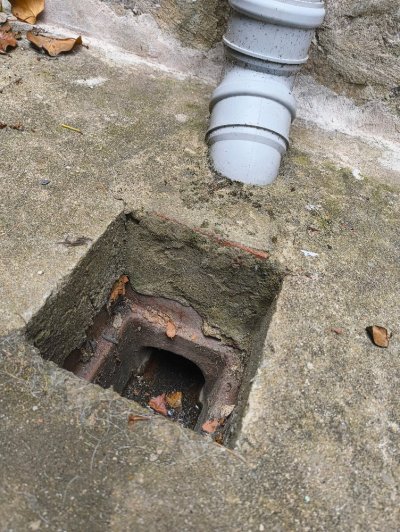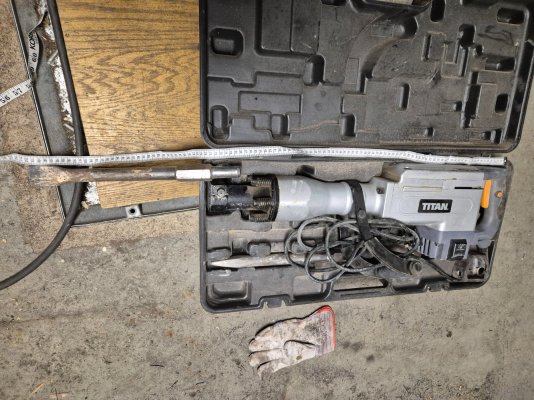Hi,
Apologies in advance for the length of this, I had a bit of a "what is it all for" weekend and I guess I'm hoping for some perspective/outlook reset.
I live in a ground floor flat in a large Victorian building. It's 13 flats in total, we have approx. one quarter of the ground floor, attached is a rough plan.
Legend
We've been here for a while and done various small bits of decorating, whilst trying to educate ourselves on a period building and avoid making things worse.
We have humidity readings above 65 in all rooms, sometimes 70+ if it's been raining. At this time of year, internal temperate is pretty stable at 21 degrees without heating on.
I understand this makes the dew point around 15 degrees, and whilst I don't have a thermal camera, I expect the walls are easily below this so likely water vapour is condensing within.
All internal walls have been cement rendered + gypsum plastered in the past. Some of the angle beads and socket back boxes are rusty, suggesting the walls are holding water.
All external walls have had cement pointing done in the past - I've started replacing this (https://www.periodproperty.co.uk/fo...joining-newer-brickwork-to-older-stone.20140/) with lime but it'll be slow progress.
Given the moisture readings, we try and live consciously, but like everyone we have to wash/clothes/cook etc. We do use dehumidifers to manage things, but my goal is longer term proper proper remedies.
With all that said, we don't have any really obvious problems at the moment, such as large patches of damp or staning on any walls, however pretty much everything manages to go mouldy/mildewy if you turn your back on it. Things like hammers with wooden shafts have obvious spores, our kitchen cupboards all smell musty, I don't feel comfortable leaving tea towels or bath towels hung up to dry. There are some hairline cracks in the plaster and they have green staining around them, my guess is that the wall is wet under the plaster/render. I exposed a small area of the internal wall to check the composition, and where I've removed the cement, I can see stone with clay/earth mortar. This was visibly wet when I removed the top coats, and now it's exposed it keeps getting mildewy/white fuzz growing on it.
We have a PIV unit near the doorway between R2 and R3, it only has one outlet attached due the complexity of running ductwork throughout the rest of the property. I'm sure it's doing more than nothing, it was installed by the previous owner (who was a landlord, not occupant - my best guess is the tenants complained about damp).
Future
As mentioned I'm currently repointing an area of the external wall in the garden.
Other things I know I probably need to do are:
I found another thing mouldy at the weekend and had an "oh ffs we should just sell up, there's no end to this" moment. I know remedial action on these kinds of properties can take a long time to show it's benefits, but I guess I'm just after some perspective with respect to:
Thanks if you read all that.

Apologies in advance for the length of this, I had a bit of a "what is it all for" weekend and I guess I'm hoping for some perspective/outlook reset.
I live in a ground floor flat in a large Victorian building. It's 13 flats in total, we have approx. one quarter of the ground floor, attached is a rough plan.
Legend
- The exterior walls are mostly stone with some brick trimmings, those that I've been able to measure seem to be about 80mm thick.
- The pink and green walls are party walls with neighbours.
- The 'ground' level of the lilac areas are all the same, and the same as the outside ground level at the front of the flat (north on the plan).
- The orange area is a suspended floor which comes up to the same level as lilac. It's wooden joists on brick pillars about 35cm above a concrete slab.
- There are two steps down from the orange area to the green area, onto the concrete slab. The green area has also been screeding with a self levelling compound and had a wooden floor down when we moved in. We removed it because it was damp/rotten at the perimiter.
- There are two steps up from the green area to the yellow area outside, making the outside ground level ~35cm above internal (at least true for the bay area of R5). It's a concrete path. The exterior ground level around R1, R3, and R6 match the current internal height, but as I say, this is a concrete slab so I've no idea how thick that is and how many courses of stone have been covered inside and outside by renovation work.
- The chimney is boarded up and capped and we have no plan to open it up, but I have added vents on the lounge side as an area of the plasterboard wall covering it was damp when we moved in.
We've been here for a while and done various small bits of decorating, whilst trying to educate ourselves on a period building and avoid making things worse.
We have humidity readings above 65 in all rooms, sometimes 70+ if it's been raining. At this time of year, internal temperate is pretty stable at 21 degrees without heating on.
I understand this makes the dew point around 15 degrees, and whilst I don't have a thermal camera, I expect the walls are easily below this so likely water vapour is condensing within.
All internal walls have been cement rendered + gypsum plastered in the past. Some of the angle beads and socket back boxes are rusty, suggesting the walls are holding water.
All external walls have had cement pointing done in the past - I've started replacing this (https://www.periodproperty.co.uk/fo...joining-newer-brickwork-to-older-stone.20140/) with lime but it'll be slow progress.
Given the moisture readings, we try and live consciously, but like everyone we have to wash/clothes/cook etc. We do use dehumidifers to manage things, but my goal is longer term proper proper remedies.
With all that said, we don't have any really obvious problems at the moment, such as large patches of damp or staning on any walls, however pretty much everything manages to go mouldy/mildewy if you turn your back on it. Things like hammers with wooden shafts have obvious spores, our kitchen cupboards all smell musty, I don't feel comfortable leaving tea towels or bath towels hung up to dry. There are some hairline cracks in the plaster and they have green staining around them, my guess is that the wall is wet under the plaster/render. I exposed a small area of the internal wall to check the composition, and where I've removed the cement, I can see stone with clay/earth mortar. This was visibly wet when I removed the top coats, and now it's exposed it keeps getting mildewy/white fuzz growing on it.
We have a PIV unit near the doorway between R2 and R3, it only has one outlet attached due the complexity of running ductwork throughout the rest of the property. I'm sure it's doing more than nothing, it was installed by the previous owner (who was a landlord, not occupant - my best guess is the tenants complained about damp).
Future
As mentioned I'm currently repointing an area of the external wall in the garden.
Other things I know I probably need to do are:
- Lower the external ground level at least in the back garden (yellow area) - I would need a concrete breaker for this and my partner is (understandably) nervous about taking the DIY approach and what we might uncover with respect to the building foundations. I'm reasonably keen on this as whoever did it, has embedded the ends of the plastic downpipes in the concrete, so I have no idea if these could be split or misaligned from the drain at the end.
- Remove the cement render from the floor up until at least a point where corner beads aren't rusty. Replaster with lime.
I found another thing mouldy at the weekend and had an "oh ffs we should just sell up, there's no end to this" moment. I know remedial action on these kinds of properties can take a long time to show it's benefits, but I guess I'm just after some perspective with respect to:
- What should I focus on first - I know the changes will be additive, but is there a job I should start with to make the biggest impact.
- Any success stories and how long it took you to get to a better situation?
Thanks if you read all that.




